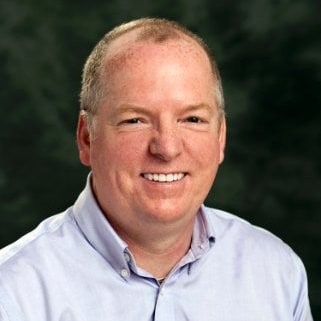
We recently caught up with Greg McKee from Labsphere, Inc. in New Hampshire USA. Greg is Chief Technologist and Product Marketing Manager for Image Sensors test, Diffuse Reflectance Materials, and Light Metrology Solutions. He has thirty years of experience in engineering, marketing and business development in complex environments with high technology light metrology. Labsphere will be showcasing their products at AutoSens in 2019, with booths in both Detroit and Brussels.
Labsphere has been very active in product development surrounding the test and validation of LiDAR systems. How do you see the market from the perspective of your customers?
The market for automotive LiDAR is in full ramp up with the manufacturers move towards the production phase of their systems, with new product announcements, acquisitions and mergers to acquire key technologies in this area. Most car manufacturers and automotive tier 1s are actively engaged in some form of LiDAR development while jockeying and positioning their technology to take the lead as the industry standard. The primary system drivers continue to be size, sensitivity range for low reflectance object at 100m to 200m, and affordability to penetrate the consumer market.
We understand you have uniform flat fielding sources and solutions for camera sensor tests, but how does Labsphere enable the testing and characterization of automotive LiDAR systems?
There is a lot of interest in Labsphere’s products for this industry. Our Permaflect targets were designed to meet the specific testing needs for the long-range sensitivity of LiDAR systems. Testing at 100m and 200m distances requires diffuse reflectance target that are large area ranging from 0.5m2 to 1.5m2 and larger that the Permaflect targets provide. They have different levels of grey reflectance that range from 5% to 95% at the LiDAR laser wavelengths, and are very uniform across the entire reflecting surface area. The robust targets are designed for indoor and outdoor use. We have standard LiDAR kits and accessories for mounting transport and storage, but we also provide application specific sizes and patterns.
You can watch and animated video of the application here…
[su_youtube url=”https://www.youtube.com/embed/KwPvFUFBFaE”]
We also provide test and calibration solutions for the system’s laser when integrated with the LiDAR instrument and at the component level. Labsphere’s new pulsed and CW laser power measurement systems have been well received for testing the total power at normal incidence and off axis power as well for ISO safety classifications. The integrating sphere-based systems are ideal since they remove the sensitive to alignment and non-uniformities common to bare sensor. Labsphere laser power measurement solutions are used in production and in development. The primary wavelengths for LiDAR are 905nm and 1550nm, however these laser power measurements systems can cover a spectral range from 300nm to 1700nm.
Tell me what else is new in Labsphere’s pipeline for LiDAR test?
LiDAR tier 1s want an easy way to demonstrate their products. Large area rigid reflectance targets can be cumbersome for this use. This is one of the many reasons Labsphere has introduced our new Flexispect targets. These are portable diffuse reflectance targets that can be rolled up for transport and unrolled for use. These targets have similar diffuse and reflective properties of the more robust rigid Permaflect targets with the added convince of portability. They’re considered ideal for testing on the go! Also, we soon will be introducing field test instruments that would allow our customers to test and validated the reflectance of their reference targets at the LiDAR wavelengths, ensuring confidence in their tests and performance.
We’ve seen recent progress with automotive camera IQ standards development via IEEE-SA P2020, but have you seen much activity towards developing industry-wide standard KPIs and tests for LiDAR systems?
I believe currently it is the automotive OEMs that are driving the sensitivity performance requirements from their tier 1 LiDAR system suppliers. They want to know if the system can sense debris like a tire in the road at 200m or if something is moving along the side of the road at 100m. For OEMs to compare data from different manufacturers there will eventually be a requirement for uniformity in testing and reporting. As these systems become more reliant in the automotive sensor families, the need for standardized testing will be driven be safety requirements and reliability performance. I am not aware any standards development in this area but would be interested in actively participating when the time comes.
How can people learn more about these LiDAR test solutions and their applications to LiDAR?
The Labsphere website hosts a lot of information for learning about our target materials, sensor calibrations systems and light measurements systems with many cases studies, application notes and white papers. We also host webcast events and are frequently posting our latest developments and unique test solution on social media including LinkedIn and Twitter. I would encourage anyone interested in this topic to take a look at www.labsphere.com and follow Labsphere or myself on linked or twitter.
About Author
Greg McKee is from Labsphere, Inc. in New Hampshire USA. He is the Chief Technologist and Product Marketing Manager for Image Sensors test, Diffuse Reflectance Materials, and Light Metrology Solutions. He has thirty years of experience in engineering, marketing and business development in complex environments with high technology light metrology. Previous positions include Vice President of Engineering, General Manager of Systems Business Development, and Applications Engineering. His area of interests includes radiometric and photometric metrology.
His experience in standards organizations include Executive Officer on the Council for Optical Radiation Measurements (CORM) Board of Directors for nine years. Chairman of the Illuminating Engineers Society (IES) Technical Procedures Committee for the Photometry of Light Sources where I managed the creation and revisions of standard test procedures of lighting sources and more recently P2020.
For your chance to meet Greg and the Labsphere team, book your tickets to attend AutoSens in Detroit 2019. Book here >>






